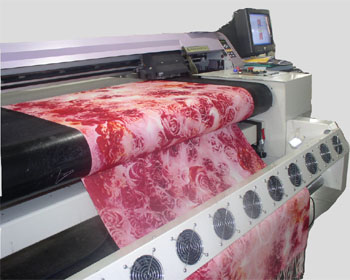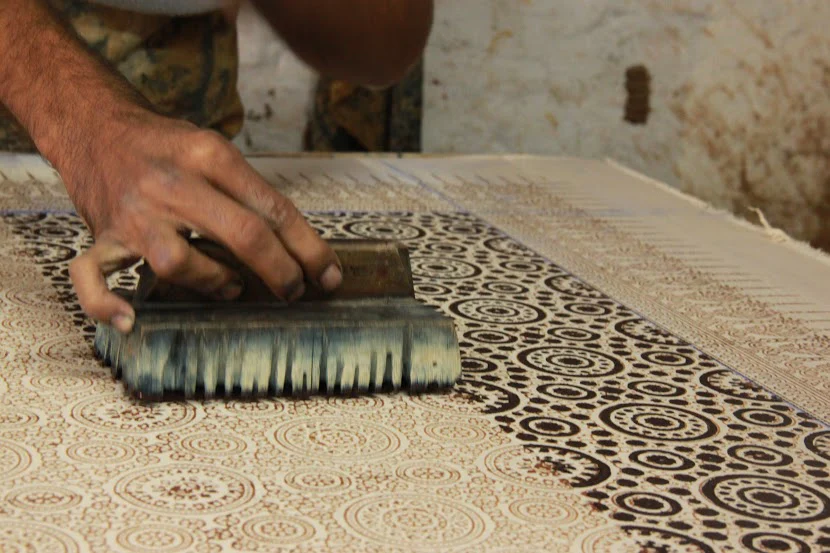7 Must-Have Tools for Successful Fabric Printing at Home

Strong 8k brings an ultra-HD IPTV experience to your living room and your pocket.
Fabric printing at home has quickly become a favorite among DIY enthusiasts, crafters, and even small business owners. Whether you're designing personalized t-shirts, unique tote bags, or decorative pillows, having the right tools can make all the difference. Without the proper setup, prints can fade, crack, or look unprofessional. To help you achieve studio-level results from the comfort of your home, we’ve compiled a list of seven must-have tools that can transform your fabric printing journey.
1. A Reliable Fabric Printer
At the heart of any fabric printing setup is the printer. For beginners, an inkjet printer paired with heat transfer paper is a cost-effective and versatile solution. It works well on cotton fabrics and delivers vibrant colors when used correctly. If you're looking for something more advanced, a Direct-to-Garment (DTG) printer allows you to print directly onto fabric with impressive detail and accuracy. Alternatively, a dye-sublimation printer is perfect for synthetic fabrics like polyester, as it embeds the ink into the fibers, ensuring long-lasting prints that won’t peel or crack. Choosing the right printer depends on your material preferences and production volume, but each option has its strengths.
2. Heat Press Machine or Iron
Once your design is printed, it needs to be transferred permanently to the fabric—and that’s where heat comes into play. A heat press machine is a game-changer. It provides consistent heat and pressure, essential for ensuring designs adhere smoothly and last through multiple washes. For those just starting out or working on small projects, a household iron can suffice, though it lacks the precision and control of a heat press. Whichever you choose, make sure the temperature and timing align with the transfer paper or vinyl instructions.
3. Heat Transfer Paper and HTV (Heat Transfer Vinyl)
Heat transfer paper is essential for inkjet and laser printer users. It allows you to print your design on a special sheet, which is then transferred to fabric using heat. There are two types: one for light-colored fabrics and another for dark materials. Using the correct type ensures vibrant colors and better durability. Heat Transfer Vinyl (HTV), on the other hand, is a great alternative for those who want to cut designs from colored vinyl sheets. After cutting and weeding the vinyl, it can be heat-pressed onto fabric for bold, clean designs. HTV is ideal for simple graphics and text, especially for t-shirts and bags.
4. Cutting Tools or Vinyl Cutter
For precision cutting, especially when working with HTV or stencils, you’ll need a quality cutting tool. A basic pair of sharp scissors or a rotary cutter can work for simple shapes. However, for intricate designs, investing in a vinyl cutting machine like a Cricut or Silhouette can significantly improve your workflow. These machines allow for exact cuts and integrate with design software to automate the cutting process. If you’re planning to produce designs frequently or start a small business, a vinyl cutter is worth every penny.
5. Printable Fabric Sheets and Freezer Paper
For those who want to print directly onto fabric without the use of transfer paper, printable fabric sheets offer a unique solution. These sheets are pre-treated to go through inkjet printers and can be sewn into final products or displayed as-is. Another budget-friendly method involves using freezer paper. By ironing fabric onto a piece of freezer paper, you create a temporary backing that allows the fabric to feed through your printer without jamming. Once printed, the paper peels off easily. This method is ideal for crafters who want to maintain the natural texture of the fabric.
6. Graphic Design Software
No fabric printing setup is complete without design software. Programs like Adobe Illustrator or Photoshop give you the flexibility to create high-resolution, professional designs. For simpler or beginner-friendly alternatives, Canva, Cricut Design Space, or Photoshop Elements can still produce excellent results. The ability to design and fine-tune your artwork ensures that what you print matches your vision exactly. Many vinyl cutters also come with compatible design programs that streamline the cutting process.
7. Screen Printing Tools and Inks
Screen printing is a traditional method that’s perfect for printing the same design multiple times. While it may require more setup—such as a screen, squeegee, and fabric inks—it produces stunning, handmade results. It’s particularly effective for cotton fabrics and ideal for artists looking to add a personal touch to each print. Fabric inks come in various types, including water-based and plastisol. Choosing the right ink depends on the texture and washability you want in your final product.
Final Thoughts
Home fabric printing is an exciting, creative endeavor—but only when you have the right tools at your disposal. From choosing the best printer to learning how to apply heat properly, every step in the process affects your outcome. With these seven tools in your arsenal, you’ll be able to produce high-quality, long-lasting fabric prints that rival commercial products. Whether you’re creating for fun, for gifts, or to start a business, investing in the proper equipment is essential.
Note: IndiBlogHub features both user-submitted and editorial content. We do not verify third-party contributions. Read our Disclaimer and Privacy Policyfor details.



